(VOVworld) - Costume role-play or cosplay has become more than a fashion trend. It’s now massive network of costume enthusiasts, spread around the globe. Why has it attracted so many devoted Vietnamese fans? We’ll find out in today’s Culture Rendezvous.
On Facebook, there arehundreds of pages are related to cosplay in Vietnam only. An annual Touch Fes is held with 4 preliminary rounds in Hanoi and Ho Chi Minh City to find the best Vietnamese cosplay duo to compete in the World Cosplay Summit (WCS) in Japan. Over the last 14 years, that international event saw has drawn thousands of participants from all around the world: last year’s winner was from Mexico, while a Russian duo won the 2014 competition.
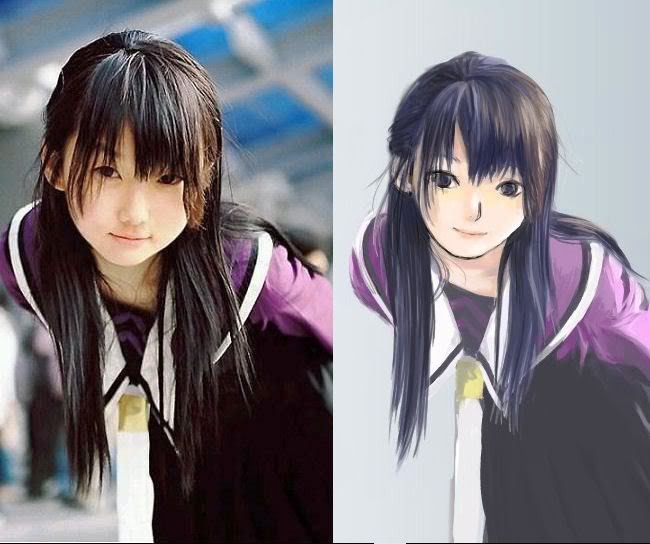 |
One cosplayer looked strikingly similar to the original version. (Photo:Tekkaus.com)
|
Nguyễn Minh Nhâm, administrator of the Hanoi Cosplay group, says cosplay started out as a personal hobby in the 1990s in the US before turning into a significant part of modern pop culture, especially in Japan and other parts of Asia including Vietnam.
“Cosplay stands for costumes and role-playing. The characters chosen to be cosplayed may be sourced from any movie, TV series, book, comic book, video game, or music band anime or manga characters. It actually started out in the US. But when it came to Japan, people turned it into a real cultural movement and named it ‘cosplay’. The original purpose behind the Japanese movement was to promote anime and manga products from Japan. But then it became a personal interest for many people. Their main purpose is to transform a drawing into physical clothing.”
The invasion of cosplay into Vietnam came along with the cultural invasion of Japanese comics (manga) and animation (anime). It all started with a passion for reading mangas and watching animes that motivated many of these fans to start dressing up. Nham again:
“Cosplay is largely asscociated with Japanese mangas and animes. That was how it was first introduced to Vietnam in 2004s. We started up with just a few hundred members, but now the number might have reached to several thousand. Cosplay has been developing really strongly in Vietnam.”
Cosplay is an act of embodiment and is now considered a type of performing art. When in costume, some cosplayers adopt the mannerisms and body language of the characters they portray. Nguyễn Hoàng Da, winner of Hanoi’s regional preliminary round of the World Cosplay Summit, says to judge the success of a cosplayer, we need to consider how well he represents the character.
“The first criterion to judge a performance is to see if the cosplayer is perfectly suitable for the character in terms of body shape and personality, so that they can immerse themselves in the character. Other criteria include clothes, accessories and make up.”
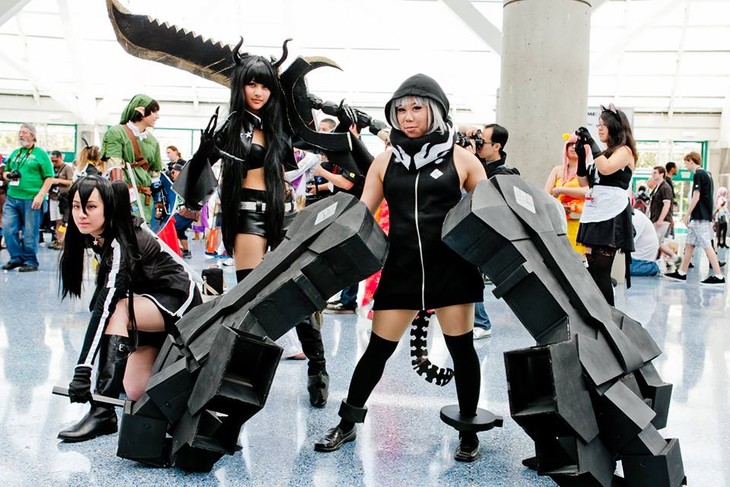 |
| Some cosplay costumes are accompanied by complicated accessories such as hats, tails, swords and other weapons. (Photo: plastikdoll) |
Manga and anime have wide variation in genres and story types. A cosplayer can choose one specific type of character to follow. Nguyen Thanh Huyen, a lawyer in Hanoi, shared her experience from 8 years of cosplaying:
“My characters are mostly knights or warriors, whose personalities tend to be strong. We usually choose the role to imitate according to our character or the hero we would want to become. When there are similarities, it is not too restrictive to portray those characters. Many cosplayers choose characters for their popularity, but if the two personalities conflict, they find it hard to portray the character.”
Nguyễn Thanh Thảo, a first-year student at Thủ Đô University in Hanoi, who has been cosplaying for over 2 years, thinks if you just create and dress up as a character of your own design, you can show the world your best.
“There is no need for you to strictly follow an existing character from animations or comics. I prefer freestyle, which can be thought of as playing an “original character”. It means that you can draw your own character in your own creative story. Then you dress up according to that. My characters were created from my emotions, so they vary greatly. Some are moody and sad. Another might have an optimistic personality, who smiles a lot and always carries a stuffed bear with her.”
Cosplay is not only about wearing costumes. It’s an activity where one can act and become someone else and walk in the shoes of his or her favorite character. Sometimes, the complexity of a costume does not guarantee a success imitation. Nham said:
“In general, people tend to choose complicated costumes. They think the beautiful original design will help elevate the quality of their outfit. But working such complex clothes requires a high level of determination and hard work. Many other cosplayers chose simpler costumes but still enjoy wearing them. They can then add to the outfit their creativity and modify it suit their body.”
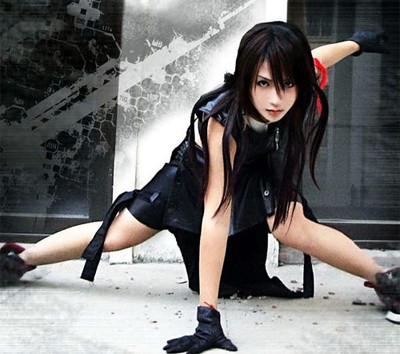 |
Cosplay allows you to walk in the shoes of yout favorite character. (Photo: GameK)
|
When it first came toVietnam, the cosplay phenomenon encountered a lot of criticism and disapproval from older people, who saw cosplay as a Halloween dress-up parade at the wrong time of year. But Nguyen Thanh Huyen, points out that cosplay is all about the intention to replicate a specific character, rather than to reflect the culture and symbolism of a holiday.
“Halloween is a traditional holiday which has a cultural aspect to it. It is dedicated to the dead with ghost stories and devil images. The celebration itself is a cultural act. Whereas cosplay is an act of entertainment, so we don’t really care about where and when to dress up. We can just do it among our small group whenever we want.”
Thao thinks it is the deep connection between a cosplayer and their chosen character that elevates the imitation from mere dress-up to a more profound experience. She said:
“Yes, we do wear costumes, wigs and make up – styles that we cannot normally wear when going out. But the art of cosplay is more specific. We have to pay attention to every tiny detail. We have to mimic postures and perform facial expressions just like the character. Accessories must also be detailed. For example, if you are portraying a character with a cold personality but you laugh a lot, then you are a failed cosplayer.”
With the popularity of mangas and animes, cosplay is now a popular trait of culture among young people. Every year, there are numerous opportunities for Vietnam’s cosplayers to compete, share experiences, and entertain the audience such as the annual Sakura Festival, Touch Fes, Cosplay Festival and so on. For cosplayers, it is the feeling of living as your hero, even for just a short moment, that inspires them to continue playing with costumes. Thao again:
“When I joined cosplaying, I became different, more open and extroverted. Before I never thought I could wear those unusual wigs, clothes, and make-up that I don’t normally wear.”
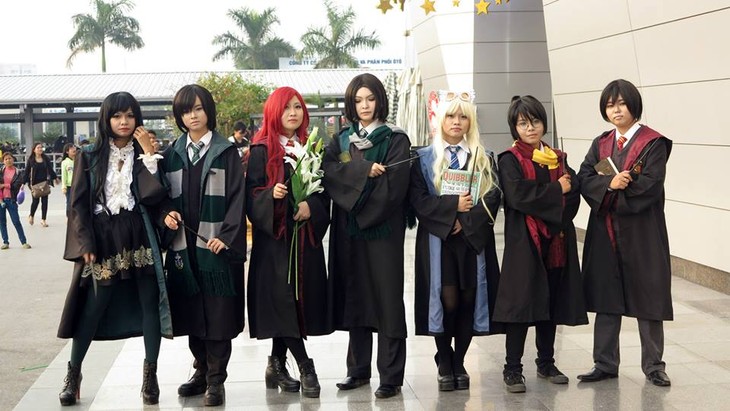 |
| This activitiy help you easily find friends of shared interest. (Photo: Nham Minh Nguyen/Lily Chan Facebook) |
Nguyen Hoang Da feels the same pride whenever someone recognizes his character.
“I love the feeling of doing cosplay. It is my personal interest. When I dress up as my favorite character, I can easily find friends who share my interest and that excites me.”
As time goes by, cosplay has become more than just a hobby. In Vietnam, the phenomenon is going so strong that even people who do not do cosplay have heard about it. Huyen has found cosplay a way to connect with friends around the world. She said:
“When I joined the cosplay activities, I gained many friends. Even now I cannot believe that I have close friends in Ho Chi Minh City, the US, Singapore and Thailand. We share information and experience: materials for making amor for example. That is really exciting. There are things in life that I didn’t know until I started doing cosplay.”
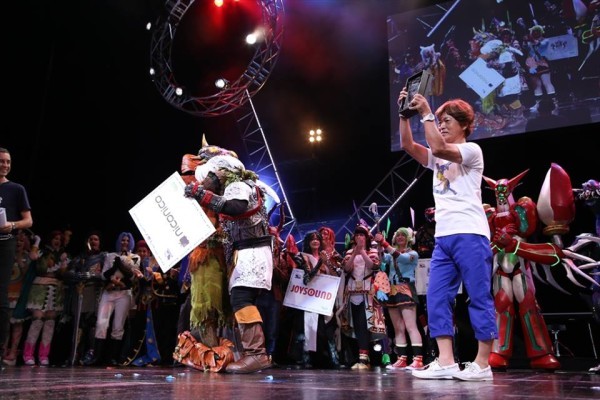 |
| Last year the World Cosplay Summit (WCS) competition named the Mexican team the best cosplay duo of 2014. (Photo: Official WCS) |
This weekend a national competition is being held in Ho Chi Minh City to choose the best cosplay duo for the final round, to be held later this year in Japan. With careful preparation and investment, there is high hope that Vietnam’s team will do great on the global stage!
Dieu Ha